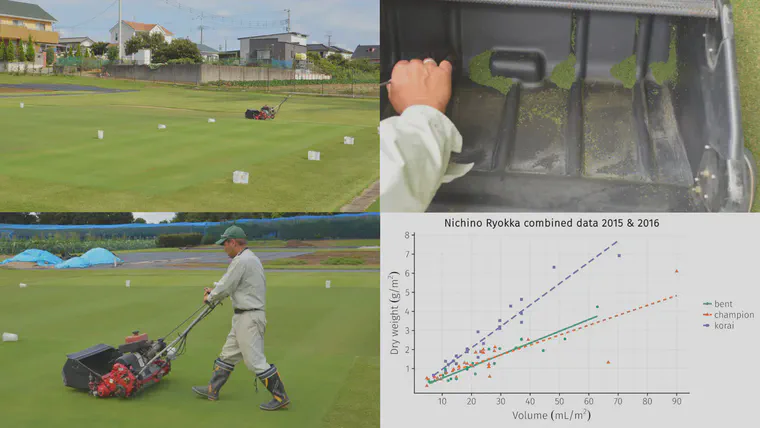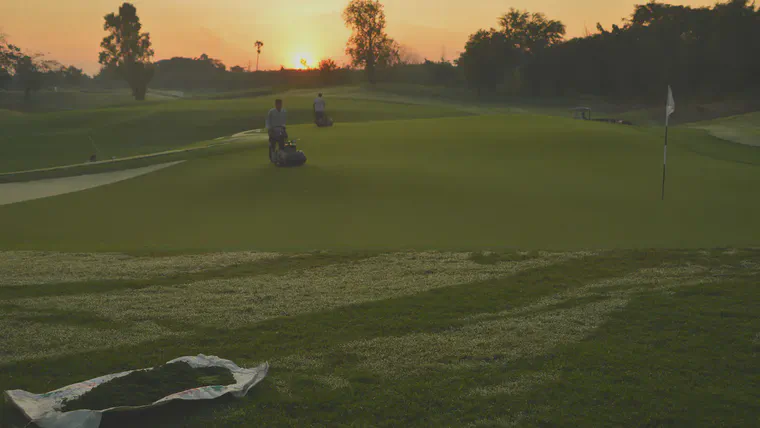Converting clipping volume to dry weight
One of the reasons I didn’t pay attention to clipping volume numbers in my youth was my failure to realize that the volume of clippings is related to the dry weight of clippings.
Those who don’t bother measuring clipping volume today occasionally mention that the volume won’t be related to the weight. “Too many variables for this to work,” they might say, and then will use that misapprehension about clipping volume as one reason not to measure it.
That seems a pity, to not be aware of the link between clipping volume and clipping dry weight, because that linear relationship is one of the most useful things about rapid growth rate assessment using clipping volume, both for turfgrass managers and for scientists.
Soon after I started paying attention to clipping volume, I wanted to check if there was a relationship between volume and dry weight. The Nichino Ryokka research facility had a drying oven, and I worked with the staff there to design a data collection project that would allow us to describe the linear relationship between volume and dry weight of clippings for multiple species.

We found that one liter of bentgrass or bermudagrass clippings from a putting green would, on average, have a dry weight of about 60 grams. We found that one liter of manilagrass (Zoysia matrella) clippings would have a dry weight of about 110 grams.
Then we followed that up with research from a golf course in Thailand, finding that the Tifeagle clippings in Thailand also had a dry weight of about 60 grams for every liter of clipping volume.

Qiyu Zhou and Doug Soldat found the same type of relationship between clipping volume and dry weight for creeping bentgrass clippings in Wisconsin.
This even works for fairway height turf. Pritchard et al. checked bermudagrass and manilagrass fairway height (13 mm, or 0.5 inches) clippings to see what the dry mass would be. Their article, “Is there a relationship between clipping weight and volume on golf course fairways?”, answers that with a resounding yes. They conclude that:
significant linear relationships were detected among clipping weight and volume on hybrid bermudagrass and manilagrass treated with varying formulations of trinexapac-ethyl … Assessing trinexapac-ethyl efficacy via measurements of clipping weight and volume resulted in similar conclusions and both assessments captured the majority of variation among replications of a particular treatment. A lack of difference among the two measurements indicated that either assessment could be used by researchers
The information shared in their article has a similar relationship as noted above for bermudagrass fairway volume to weight—about 60 g of dry weight per liter of ClipVol.
You can read about this and how to apply it in Appendix B.7 Estimating nutrient use and harvest of my One Bucket at a Time book. Also, see the PACE Turf update on Three simple ways to estimate nutrient removal. And see my slide presentation on Turfgrass growth potential and measuring clipping volume from the Czech Greenkeepers Association conference in 2018.